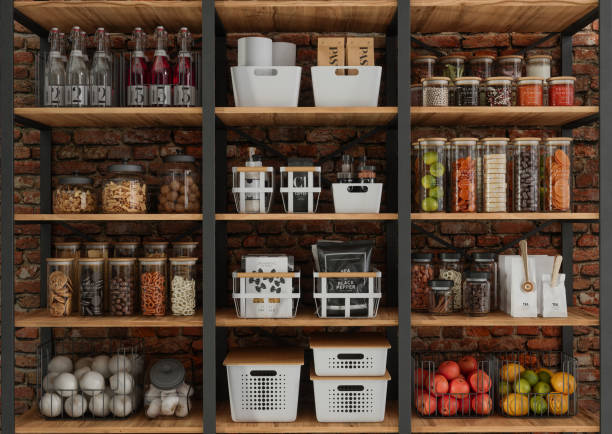Safe food storage: containers, seals, and temperature guidelines
Safe food storage depends on choosing the right containers, maintaining effective seals, and following temperature guidelines that limit bacterial growth. This overview explains how materials, container design, organization, and simple maintenance steps support hygiene, mealprep efficiency, and longer shelf life for cooked and raw items in home kitchens.

Which containers suit materials and maintenance?
Selecting containers involves matching materials to use and maintenance needs. Glass and high-grade plastics are common for refrigerated storage because they resist staining and retain seals; glass is inert and easier to sanitize. Ceramics work well for dry goods and plated leftovers but can be brittle for frequent fridge-to-oven use. For heavy-duty options, castiron is excellent for stovetop and oven cooking but is not ideal for storing acidic foods long-term unless properly seasoned and lined. Consider dishwasher compatibility, scratch resistance, and whether the container’s materials release odors or absorb colors when planning storage and maintenance routines.
How do seals affect hygiene and storage?
Seals and closures control exposure to air, moisture, and contaminants. A tight silicone or rubber gasket reduces cross-contamination and slows oxidation, which is important for cut fruits, sauces, and mealprep portions. Lids that click or snap often have a visible indicator to confirm closure; vacuum-seal systems extend shelf life but require specific containers or bags. Regularly inspect seals for cracks, deformation, or mold, and replace worn gaskets. Clean seals thoroughly during maintenance to prevent trapped food particles that compromise hygiene and lead to odors or bacterial growth.
What temperature guidelines protect mealprep?
Temperature control is central to safe storage: refrigerate perishable cooked and raw foods at or below 4°C (40°F) and keep frozen items at −18°C (0°F) or colder where possible. Hot foods should cool to under 60°C (140°F) within two hours before refrigeration to avoid prolonged temperatures in the bacterial “danger zone.” For mealprep portions, label containers with date and contents, and use shallow, vented containers to speed cooling. When reheating, ensure internal temperatures reach at least 74°C (165°F) to reduce risk. Maintain consistent fridge organization so airflow isn’t blocked and temperatures remain stable.
How to organize cookware, cutlery, tableware, and utensils?
Organization reduces cross-contamination and speeds mealprep. Store raw proteins on lower fridge shelves in sealed containers to prevent drips onto ready-to-eat tableware or utensils. Dedicate drawers or racks for cutlery and frequently used utensils to limit handling and maintain hygiene. Plating items and serving tableware should be kept dry and clean, ideally separated from food prep zones. Use clear, labeled containers for leftovers so cookware and utensils return to their places promptly after cleaning, supporting both ergonomics and efficient kitchen workflow during busy mealprep times.
How does sustainability shape container choices?
Sustainability encourages selecting durable materials and reducing single-use plastics. Reusable glass, stainless steel, and well-maintained ceramics offer long lifespans and are often recyclable or inert when disposed of properly. For occasional bags or wraps, consider compostable or certified recyclable options and prioritize containers that support reuse. Maintenance—such as avoiding abrasive cleaners that shorten a container’s life—also ties into sustainability. When buying, evaluate repairability (replaceable gaskets or lids) and choose multi-purpose containers suitable for storage, reheating, and plating to reduce overall waste in your kitchen.
What ergonomics support safe storage and upkeep?
Ergonomics in storage focuses on accessible placement and ease of handling to reduce spills and accidents. Store heavy cookware like castiron near countertops to minimize lifting; lighter, stackable containers should be placed on higher shelves. Choose container shapes with comfortable grips, and labels with large, legible text to reduce awkward handling while timed to cool or reheat. Regular maintenance—cleaning seals, checking lids, and testing temperature gauges—keeps systems intuitive and reliable. Thoughtful organization of utensils and cookware supports hygiene by reducing accidental contact between raw and ready-to-eat items.
This article is for informational purposes only and should not be considered medical advice. Please consult a qualified healthcare professional for personalized guidance and treatment.
Proper food storage is a combination of appropriate container materials, reliable seals, and strict temperature control. By pairing the right storage choices with regular maintenance and clear organization, you reduce food safety risks, improve mealprep efficiency, and support sustainability in the kitchen. Small habits—labeling, shallow cooling, and inspecting seals—have outsized effects on hygiene and the usable life of cooked and perishable foods.





